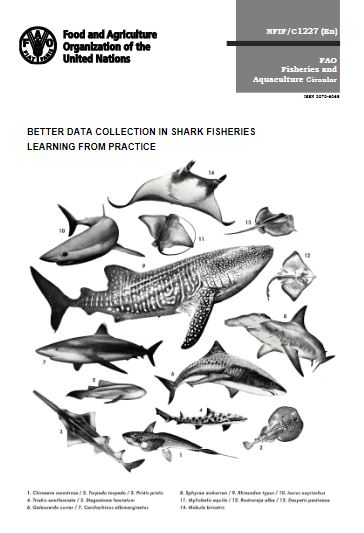FAO: Better data collection in shark fisheries
Better data collection in shark fisheries – Learning from practice
Some species and stocks of sharks, rays, skates, and chimaeras (termed shark in this review) are rapidly depleting due to climate change, land-based influences, and overfishing. These pressures, coupled with sharks’ low reproductive potential (slow growth and delayed maturation; long reproductive cycles; low fecundity; and long lifespans) place sharks in a risk profile that is more akin to mammals on land than fish in the ocean. The development of policy, and the delivery of management and conservation measures regulating the use, international trade, and capture of sharks (whether as a targeted species or as bycatch in fisheries), is hindered by gaps in basic knowledge – a knowledge that is required in order to get a clear sense of their status in real-time. Many countries are establishing or strengthening monitoring across shark value chains to overcome these shortfalls in information. This document reviews what shark fisheries data is being collected, highlighting the opportunities and constraints in collecting information on sharks in fisheries, based on practical experience. It includes information from 28 surveys across 19 countries: 9 in the Mediterranean, 5 in Africa, 3 in Asia, and 1 in Oceania. Interviews were conducted with data collectors and managers across the entirety of the survey process, while data collection variables were documented in order to inform those interested in the collection, provision, and exchange of shark information on common practices and their commonalities. The review identifies standardized information metrics which, if collected more generally, would strengthen the opportunity for harmonized reporting and cross-comparability across surveys. In addition – and in order to assess the status quo – the current data collection requirements of management measures applied to sharks by regional fisheries management organizations (RFMOs) were reviewed, including “no retention” measures. Finally, the review proposes a list of the minimum standard measurements and common life-history parameters required to support the assessment of shark stocks in fisheries.
FAO Fisheries and Aquaculture Circular No. 1227. Rome 2021
PDF-DOWNLOAD
— — — — —

